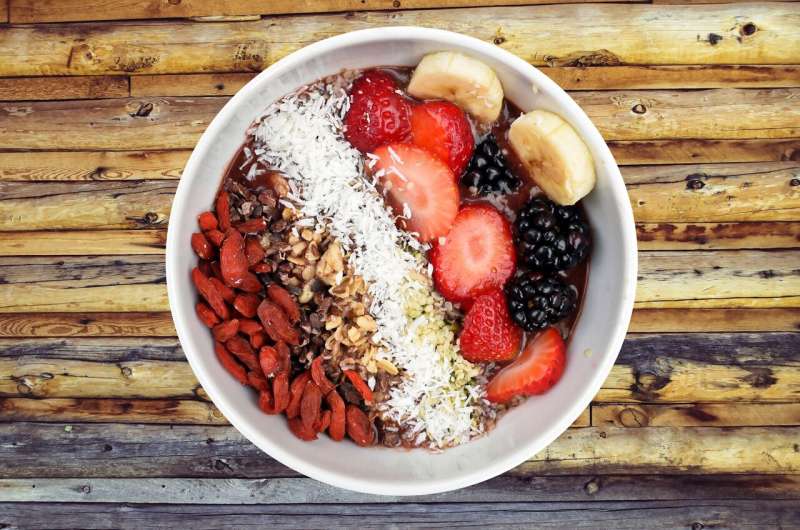This article has been reviewed according to Science X's editorial process and policies. Editors have highlighted the following attributes while ensuring the content's credibility:
fact-checked
peer-reviewed publication
trusted source
proofread
Researchers discover how high-fiber foods make people feel fuller

In a study published in Science Translational Medicine, researchers at Imperial have found that a higher-fiber diet stimulates the release of a key appetite-reducing hormone, in the ileum, part of the small intestine.
Peptide tyrosine tyrosine (PYY), which is known to reduce appetite and food intake, was released in greater quantities from ileal cells when people ate a diet that was higher in fiber.
The ileum, the longest part of the small intestine, plays an important role in appetite regulation by secreting enzymes and hormones, but little has been known about how it interacts with different types of food until now.
The researchers also identified some of the key metabolites—small molecules resulting from the breakdown of foods—that caused the release of PYY, leading to the intriguing possibility that in future, foods could be designed to inhibit hunger.
In the study, a small group of healthy volunteers were asked to consume a variety of different meals, including high and low fiber foods such as apples, chickpeas, carrots, sweets and white bread, over a period of four days. They were fitted with nasoendoscopic tubes—flexible tubes going down into their small intestine. This enabled the researchers to take samples of 'chyme'—the substance produced in the ileum—before and after the participants ate meals.
As well as finding that the environment inside the ileum was far more responsive to fasting and feeding than previously thought, the research team found that foods that were higher in fiber altered the microbiome and stimulated the release of PYY from ileal cells more than the lower fiber foods did.
This was true even when the higher fiber foods were broken down in structure—for example, pureed chickpeas or apple juice.
Molecules such as stachyose and the amino acids tyrosine, phenylalanine, aspartate and asparagine, commonly found in foods such as beans, cheese, meat and poultry, were all found to contribute to the release of PYY.
Dr. Aygul Dagbasi from Imperial's school of Metabolism, Digestion and Reproduction and a lead author of the research, said, said, "We now understand how dietary fiber is associated with lower levels of hunger, compared to a low fiber diet, and that certain fibers and amino acids stimulate PYY. For example, oats and legumes have high amounts of fiber and they are a good source of protein, so are good foods to promote satiety."
Designing healthier diets
The sites deep within the human gastrointestinal tract are difficult to access, so this study represents a step forward in scientists' understanding of the ileum's role.
Imperial's Professor Gary Frost, who co-led the study, explains, "Our study not only gave more detail on how the ileum constantly changes in response to fasting and feeding, but also has implications for designing healthier diets. If we can find ways to deliver certain foods to the right parts of the intestine, that might help people who are struggling with their weight, giving them more appetite control and helping them to comply with diets."
More information: Aygul Dagbasi et al, Diet shapes the metabolite profile in the intact human ileum, which affects PYY release, Science Translational Medicine (2024). DOI: 10.1126/scitranslmed.adm8132




















